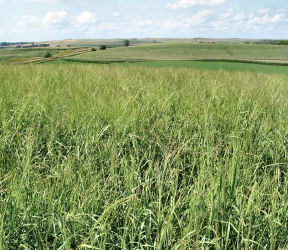- More than 2 years ago
Reap more than you sow. That’s the challenge faced by farmers who grow crops for biofuels.

Even as biofuel production booms, some scientists have questioned whether the fertilizer- and tractor-intensive farming of crops used to make biofuels consumes more energy than it produces. But making ethanol from switchgrass can yield more than five times as much energy as the farmers use to grow the crops, new research shows.
The study is the first based on large-scale, real-world farming of switchgrass, a perennial prairie grass that can grow on marginal lands unsuitable for food crops. In previous work, scientists estimated the efficiency of growing switchgrass for fuel based on experimental plots, which are typically only a few square meters in size.
Kenneth P. Vogel and his colleagues at the University of Nebraska in Lincoln tracked all the tractors, diesel, fertilizer, and herbicide used to grow 10 plots of switchgrass in North and South Dakota and Nebraska for 5 years, the team reports in the Jan. 15 Proceedings of the National Academy of Sciences. The plots ranged in size from 7 to 23 acres.
Because the farmers used high-yield farming techniques, “the amount of energy for the [crop] production was about half what other people had estimated,” Vogel says. Future strains of switchgrass will probably perform even better, he adds, considering the relatively small effort scientists have put into optimizing strains compared with work on corn and other food crops. “There’s still considerable room for improvement,” Vogel says.






